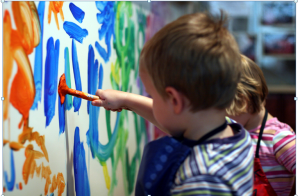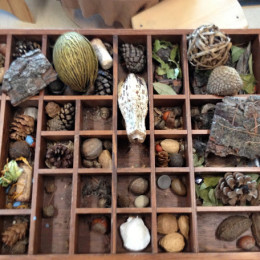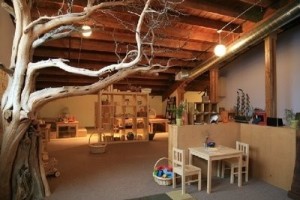Reggio Approach
At the heart of the Reggio philosophy is the belief that children are full of curiosity and creativity, rather than empty vessels waiting to be filled with facts and figures. The Reggio-inspired curriculum is flexible and emerges from children’s ideas, thoughts, and observations. The Reggio goal is to cultivate a lifelong passion for learning and exploration.
 What is the Reggio Emilia Approach?
What is the Reggio Emilia Approach?
The Reggio Approach derives its name from its place of origin, Reggio Emilia, a city located in Emilia Romagna in Northern Italy. Shortly after World War II, Loris Malaguzzi, a young teacher and the founder of this unique system, joined forces with the parents of this region to provide childcare for young children. The Reggio approach was inspired by the need for women to return to the workforce. This education system has developed over the last 50 years into a unique program that has caught the attention of early childhood educators worldwide.
Fundamental Principles of the Reggio Emilia Approach
Strong Self Image
An image of the child as a strong, capable creator in his or her own learning. Each child is competent and full of potential. The focus is on understanding and bringing out the child’s viewpoint and abilities.
Expressive Arts in Learning
The centrality of expressive arts is in learning. We give children the opportunity to look at, experience, and express their world in many different ways and they are encouraged to use all their senses. Loris Malaguzzi, founder of the Reggio Approach spoke about the hundred languages of children. We value each child’s capacity to communicate through languages such as music, painting, drawing, art, clay, collage, imaginative play, movement, dance, emotional expression, friendship, poetry and song-writing.
 Education as Collaboration
Education as Collaboration
Education is the continuous interaction, exchange, and collaboration between teachers, children and parents. Teachers, parents and children are encouraged to collaborate, exchange feedback, compare, negotiate, hypothesize, and problem-solve in groups. Multiple perspectives promote a sense of belonging to the group as well as the uniqueness of self
Class Environment
The space within the school – or the environment – is considered the third teacher. Teachers intentionally organize, support and plan for various spaces for children. The daily schedules are planned to ensure that there is a balance between individual, small and large group activities, child-directed and teacher-initiated activity, and inside as well as outside experiences.
Projects are the Backbone
Projects provide the backbone of the children’s and teachers’ learning experiences. They are based on the strong convictions that learning by doing is of great importance and that to discuss in-group and to revisit ideas and experiences is the ultimate path to learning. Project ideas come from the experiences of the children and teachers, a chance event or problem posed. They can last from a few days to several months.
Documentation is used as a means to collect information, observations, and learning. It can be in the form of observations, photography, video, conversation transcripts, and/or visual mediums like paint, wire, clay or drawing materials. Teachers use documentation to identify strengths, ideas, and next steps to support learning.
An emergent curriculum
An emergent curriculum is one that builds upon the interests of children. Topics for study emerge from the talk of children, through community or family events as well as the known interests of children. The emergent curriculum model provides the perfect complement for infusing Jewish values and traditions into the Reggio Emilia experience. Community and seasonal activities, such as the High Holidays, candle lighting, and donating to charity, meld seamlessly into the framework of incorporating the natural life rhythms into the learning experience.

